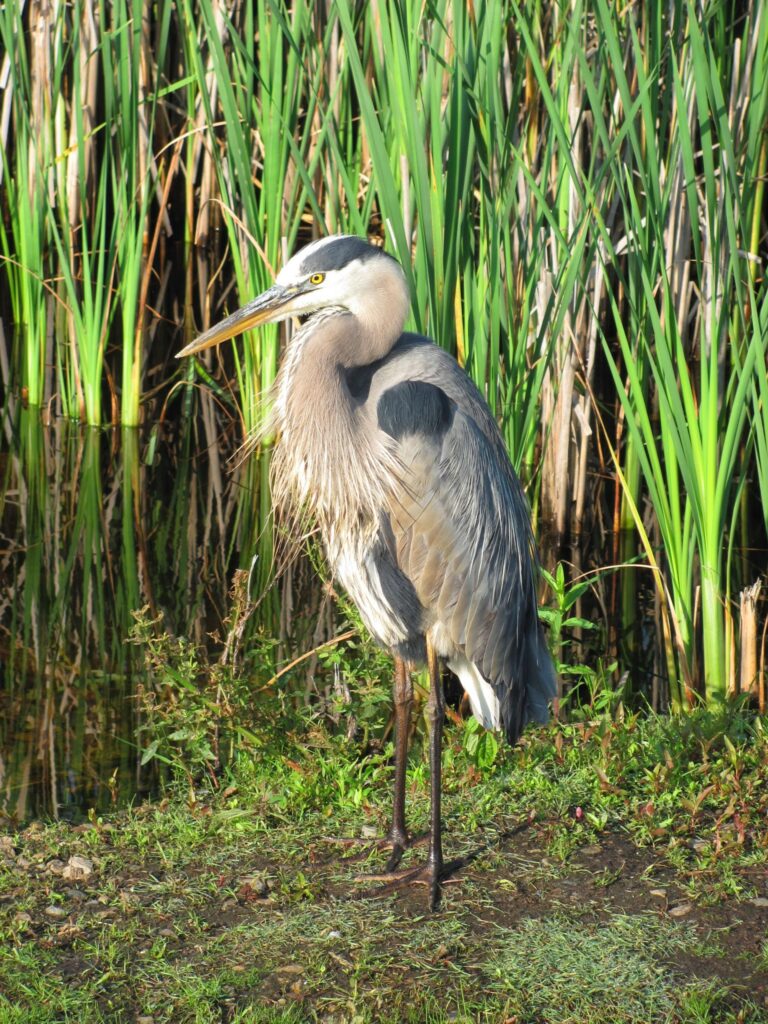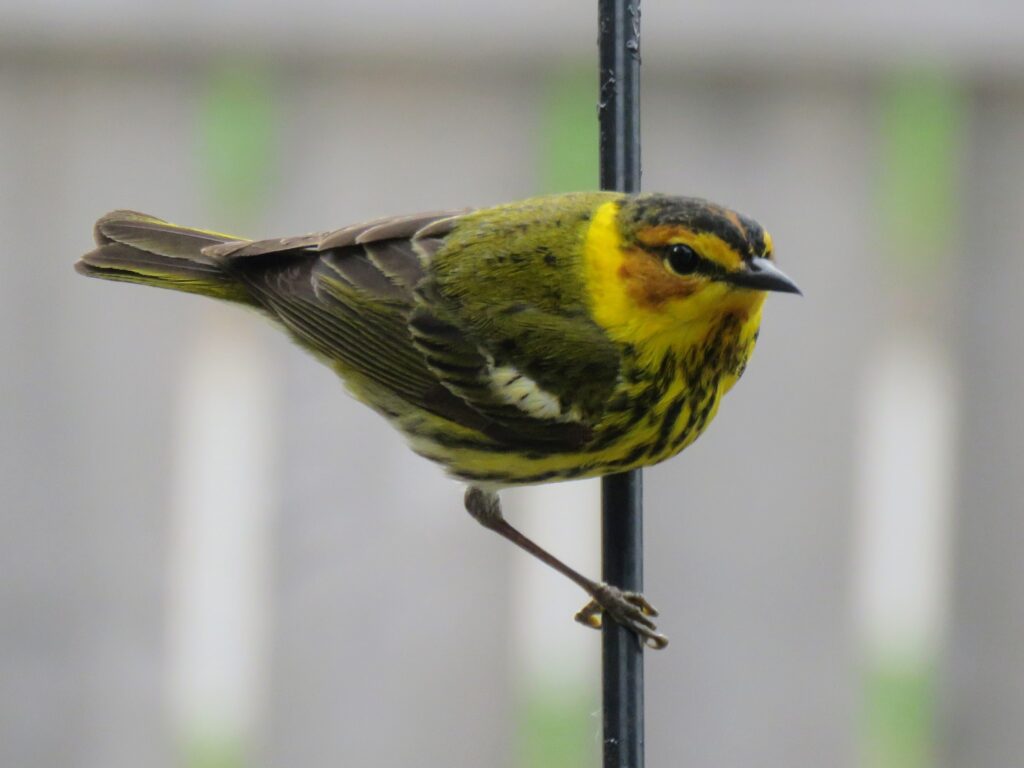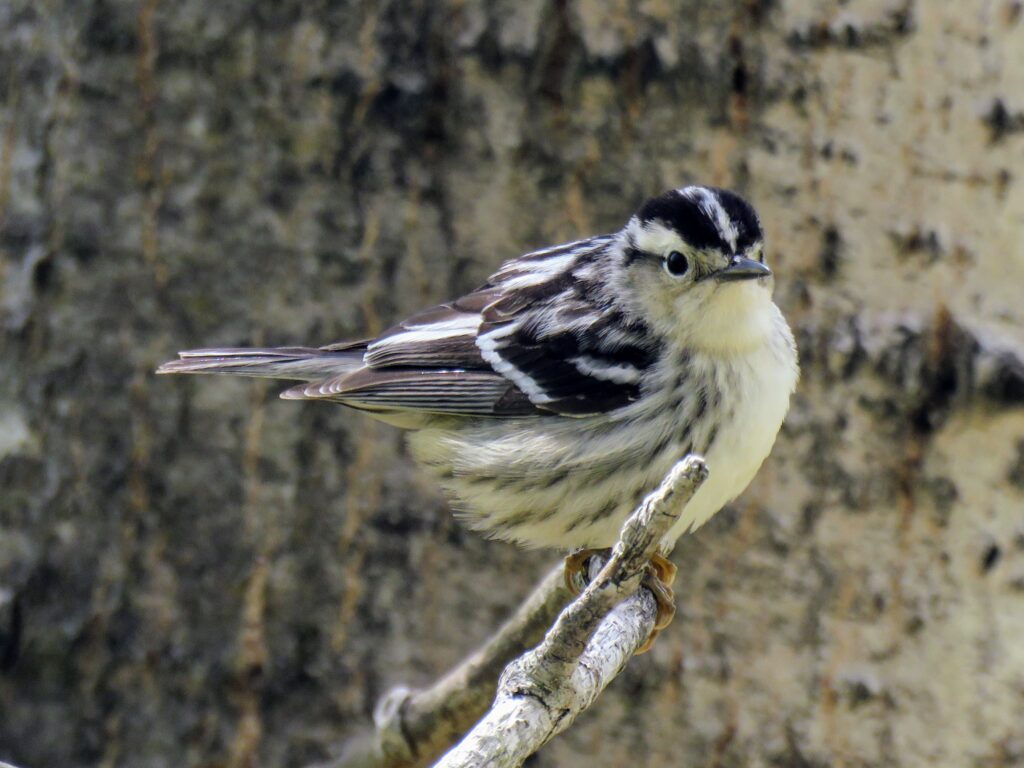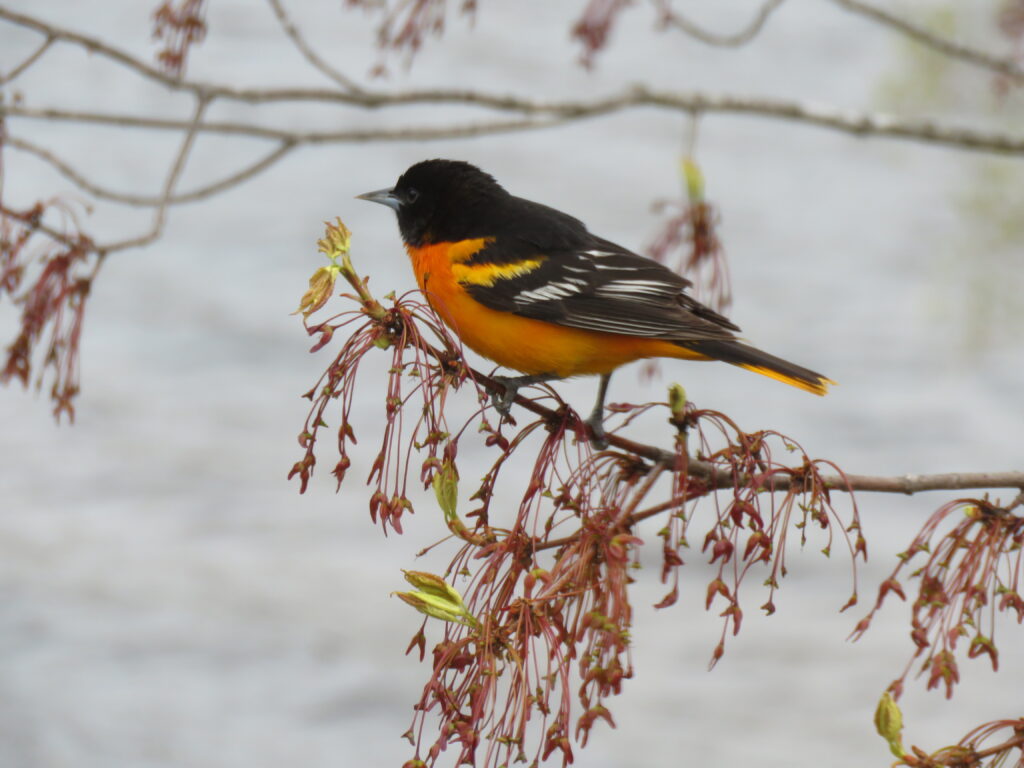Dana Little
The wealth of birdlife around Taylor Pond always amazes me. When we bought our current home on the pond it was a Great Blue Heron standing in the waterlily-filled cove that most convinced me to settle along the shore. Last year we had a Bald Eagle nesting in one of the tall White Pine trees on the west shore. In the winter, eagles and crows collect around the ice-fishing shacks to feed on discarded fish. In the summer, osprey hunt the waters for fish and then fly back to their nests in the distance. Belted Kingfishers haunt the edges of the pond, perching on overhanging branches of trees or the mast of a sailboat, before plunging into the water after small fish.

For me, spring officially starts when I hear the first Red-winged blackbird singing in the swamp that surrounds my home. Soon, joined by dozens of other Red-wings and Grackles, there ensues a cacophony of sound for the next month, shouting out that warm days are coming. They nest in tangled buttonbush swamps almost impossible for a person to navigate and difficult for predators to penetrate. A few weeks after they arrive, I will listen in the evenings for the calls and flight songs of the American Woodcock that probe my lawn looking for worms. As the days warm the Tree Swallows return to their nesting boxes and the flute-like songs of the Veery and Hermit Thrush reassure me that all is well.

The pond and surrounding wetlands nourish a variety of larval insects that hatch into flying adults in the spring and summer. Warblers come from South America to feed and raise their babies on the abundant insect life. The surrounding woods provide summer homes to one of the world’s most diverse collection of warblers including Yellow, Chestnut-Sided, Magnolia, Black-Throated Blue, Black-Throated Green, Yelow-rumped, Pine, Tennessee, Nashville, Northern Parula, Black-and-White, American Redstart, Common Yellowthroat, Northern and Louisiana Waterthrush, Ovenbird, Canada, and Wilson’s Warblers. Other warblers only show up for a few weeks as they head north in the spring for boreal Canada or south in the fall to Central and South America. These include the Cape May, Blackburnian, Palm, Blackpoll and Orange-Crowned Warblers. Being hard to spot makes seeing these colorful gems special.

The pond serves as a valuable migration stop for many other birds. Flocks of ducks, tired from flying hundreds of miles, stop to rest and feed on the water. In the spring and fall we often see Ringed-neck, Green-winged Teal, Lesser Scaup, Bufflehead, Common Goldeneye and Ruddy Duck.
Shy American Bitterns make their pumping calls from deep in swampy areas and rarely can be seen flying overhead. Virginia Rails skulk about in the tangled wetlands, more often heard than seen, it is a rare reward to watch them walking along with a half-dozen black, fluffy ping-pong ball-sized youngsters. Green and Great Blue Herons hunt along the shores for fish, snails, crayfish, and aquatic insects. Fruit-loving Gray Catbirds and Baltimore Orioles love the thickets in wet areas that are loaded with berry bushes. As you might expect from the abundance of black flies, mosquitoes and other annoying insects, we have a variety of flycatchers including the Eastern Wood-pewee, Willow, Alder, Least and Great Crested Flycatchers, and the Eastern Phoebe that loves to build its nest around the house. In the summer you can hear the shy Black-billed and Yellow-billed Cuckoos calling as they search for the caterpillars feeding on tree leaves.

I have documented 121 species of birds that nest around the pond or come to this area to feed their young. I will post a comprehensive listing on the website www.taylorpond.org. In addition, another 36 species use the pond or surrounding lands as a staging area on their way north or south in the spring and fall. Rise up at dawn some spring morning and listen to the chorus of birds singing, one of the world’s natural wonders everyone should experience. Birds brought me to my home and provide an ever-changing spectacle for me to enjoy my stay.